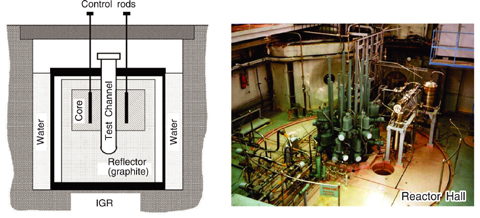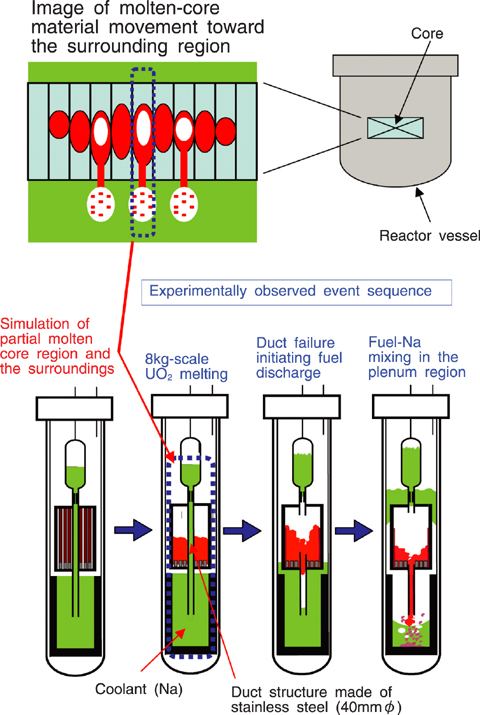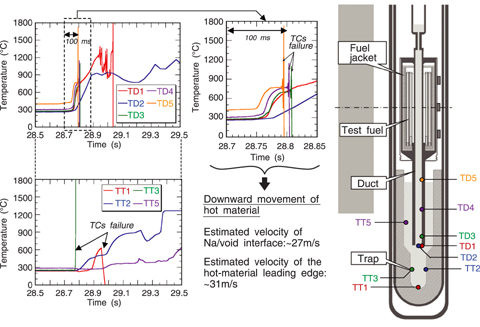
Fig.1-18 IGR and test channel

Fig.1-19 Concept of molten core accident simulation

Fig.1-20 Example of data obtained from EAGLE
JAEA is conducting an experimental project called EAGLE in order to clarify molten-core-material behavior in hypothetical core-melt accidents of FBR and to confirm that the consequences of such an accident can be mitigated appropriately, although the possibility of such accidents is extremely small. This experimental program is a collaboration between JAEA and National Nuclear Center of Republic of Kazakhstan using its IGR (Impulse Graphite Reactor) specifically designed for experiments.
IGR has a central hole as illustrated in Fig.1-18 to accommodate the test channel equipped with double-layer pressure vessels enclosing fuel for testing. Three experiments in which about 8kg of UO2 is melted have been performed up to now simulating accident conditions. These tests provided information on accident progress behavior (Fig.1-19). Fig.1-20 shows an example of the data obtained from the experiments. In this experiment, molten fuel broke through the stainless steel (SS) duct structure and discharged through the duct toward the cold region filled with sodium (downward in this experiment), and was cooled down through mixing with sodium. Besides thermocouple (TC) data shown in this figure, various data from void-sensors (detecting bubbles in sodium), pressure gauges, microphones, etc. were obtained, and they elucidated the series of physical processes which occurred, such as the duct-structure failure, contact with molten fuel pushing sodium downward from the core (TCs at upper, middle and lower levels detected temperature increases with time lags with this order) and the fuel discharge through the duct.
In the conventional safety evaluation of FBR core-melt accidents, it was assumed that a large amount of molten-fuel remained within the core region which could potentially cause a rapid power excursion with massive molten-fuel movement. However, through the EAGLE experiments, it was shown that molten fuel tends to discharge out of the core region so that massive amounts of molten fuel remaining within the core region is very unlikely. The new findings obtained through the EAGLE project indicate that the conventional safety evaluations are conservative, and that core design features enhancing fuel-discharge characteristics can prevent severe power excursions.